How Students Would Improve Their School Lunch Experience
Author: Ki Sung
Go to Source
Listen and subscribe to our podcast from your mobile device:
via Apple Podcasts | via Stitcher | via NPROne | via Spotify
School lunchtime is when kids can eat and recharge before getting back to learning. But at many schools across the country, kids don’t have much time for lunch. Some schools average 25 minutes in the elementary years and 30 minutes for middle and high schools but time gets eaten up when kids have to wait in long lines for food. A 2013 survey of parents found that 20 percent of their elementary-age kids had less than 15 minutes to eat.
And the amount of time kids have for lunch influences food choices. Studies have shown that when kids have 20 minutes or less to eat, they will eat less food and skip the fruit. Even if fiber and vitamin-rich foods end up on a kid’s tray, that doesn’t mean the kids have time to eat them, and this food often ends up in the trash. Changing food without addressing the time and conditions needed to eat those foods can get in the way of healthy eating.
And then there are social issues. School administrators and lunch supervisors are often trying to maintain order so that kids are safe. But ask kids what concerns them during lunchtime and it’s all about their peers. They don’t want to be left out, especially in middle school, when socializing means so much to developing adolescents.

“There might be some kind of joke they wouldn’t understand,” said Tice Creek student Alejandra Gonzalez about kids waiting in the cafeteria line. Being included in the conversation is so important, students spend time in the mornings to make lunch so they don’t have to wait in the cafeteria line.
And then there’s the matter of getting a good spot at a table inside the bustling cafeteria.
“Sometimes you might worry that you might not get a spot,” said Gonzalez. “You might get pushed to the edge or sit at a different table than you would like because of the fact that you have to wait in line, and then it takes a lot more time to get ready and sit down with your friends.”
It’s why so many kids at this Walnut Creek school bring their lunch to school. Nearly all middle school students I observed brought their lunch to school. And it’s often full of snacks.
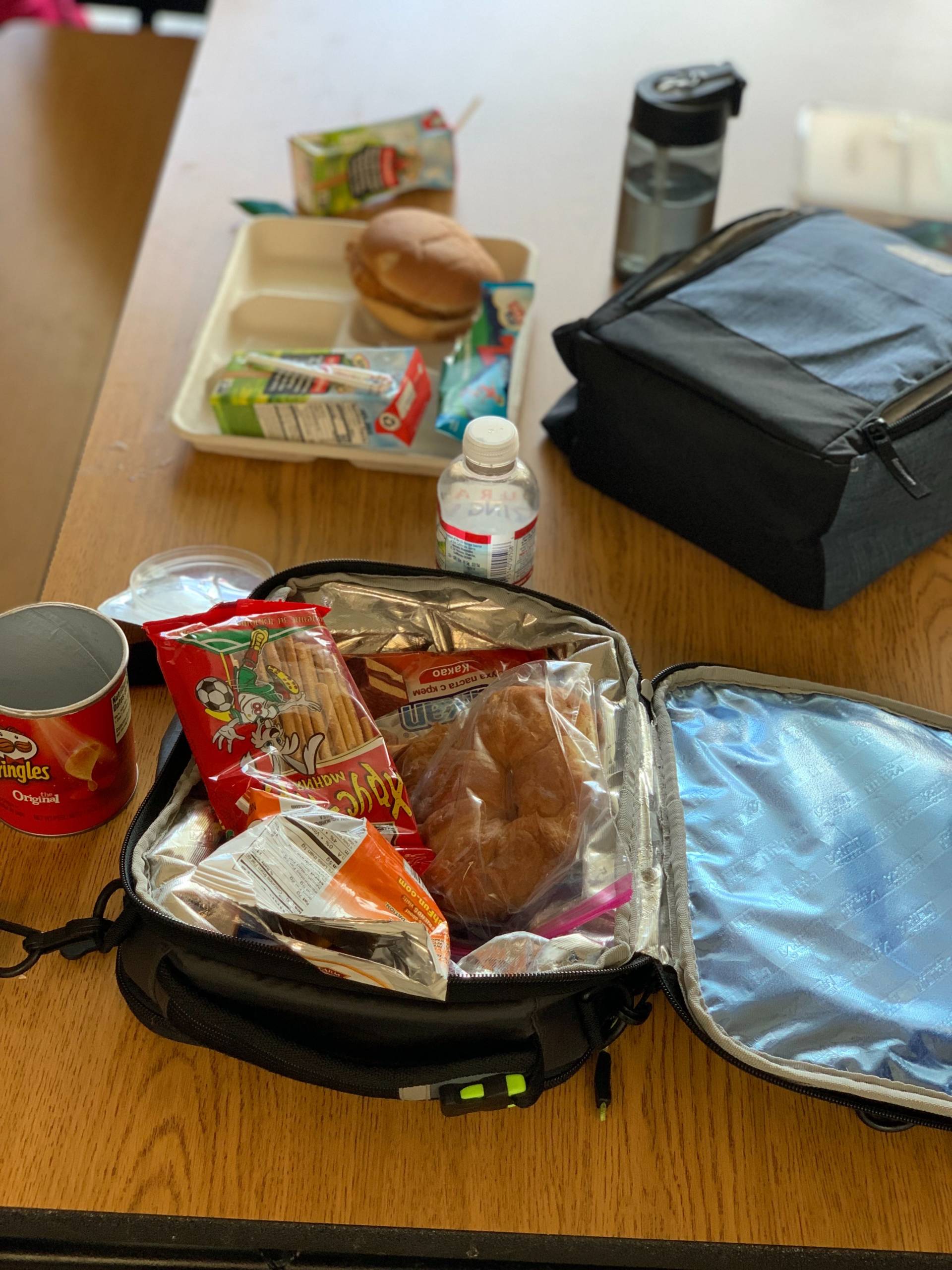
DESIGN THINKING
In order to improve the school lunch experience, Zetta Reicker and Melanie Brokdskiy, who both have kids enrolled at the school, approached the principal and the district superintendent to explore what a student-led school lunch redesign might look like. Reicker was the nutrition director of the San Francisco Unified School District, so she knows the challenges inherent to school lunch. She also worked with design firm IDEO when it worked with the district to launch a school lunch redesign process in 2013.
As part of redesigning the lunch experience for Tice Creek students, Reicker and Brodskiy hosted a series of workshops to gather student input about food and how lunch could better serve students. The students learn about sourcing and sustainable farming. During a taste test of different varieties of rice and pizza, Brodskiy tells students to close their eyes so they can pay attention to their senses and notice the differences.
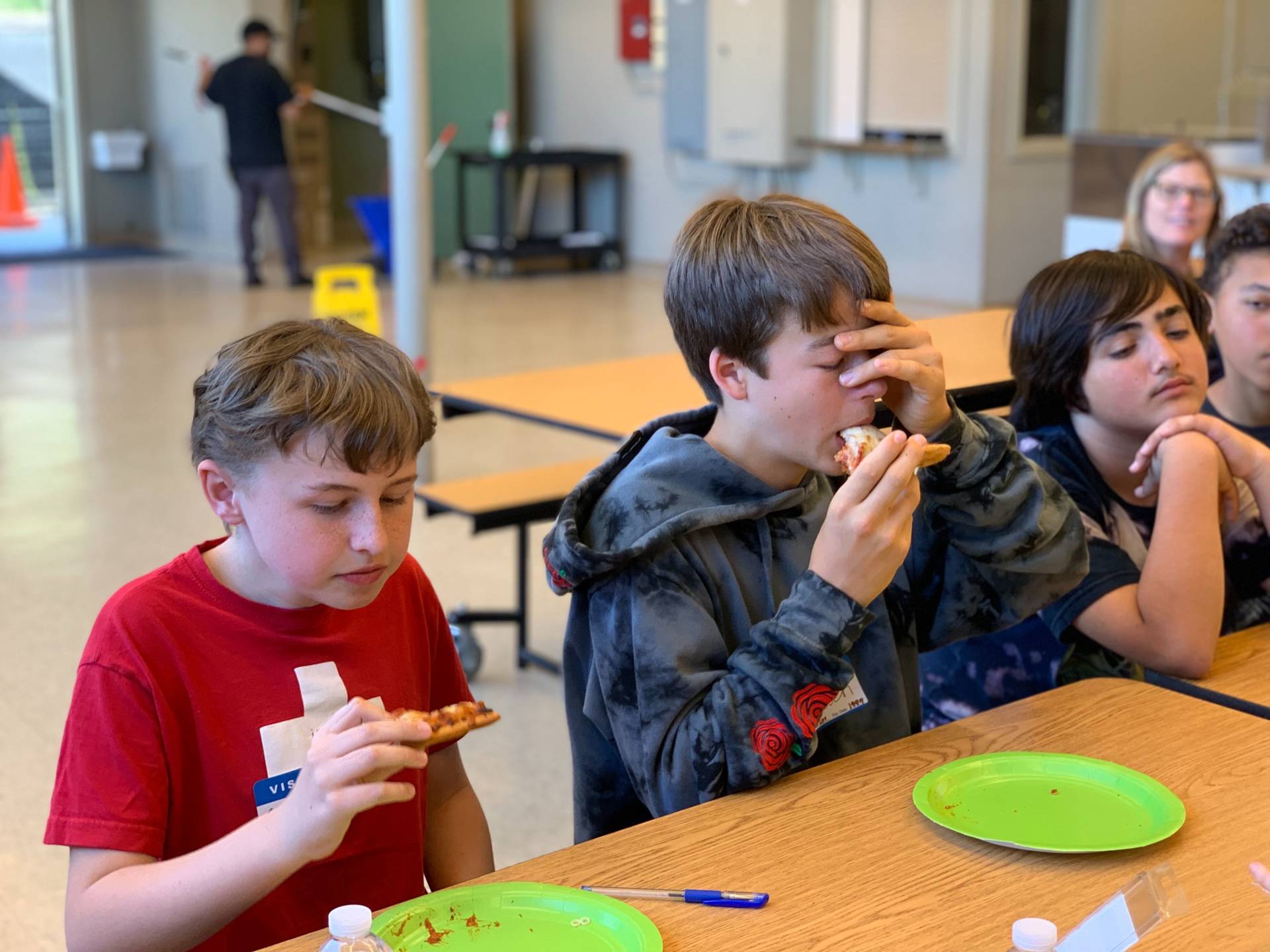
The kids enjoy tasting the food, but the subject they’re particularly skilled at has more to do with socializing.
Since students are ultimately the experts at what makes a good lunch experience, Reicker and Brodskiy are eager to hear their ideas. They use the design thinking process to brainstorm and iterate on ideas kids put forward.

The students in the workshop prototyped ideas to make lunch a better experience. For example, Soren Squire suggested an activity table for students who want to play games during lunch or do homework. Another student described kiosks where kids can grab their lunch quickly to avoid the cafeteria line. Another worked on an easier way to order lunch in the morning.
REAL-WORLD DESIGNS
One place where a lot of these ideas have already been implemented is Dr. Martin Luther King Jr. Middle School in San Francisco. I visited several times during lunch, and had the chance to see students use their time differently. There were some long tables inside the cafeteria, but students were also spread out across campus.
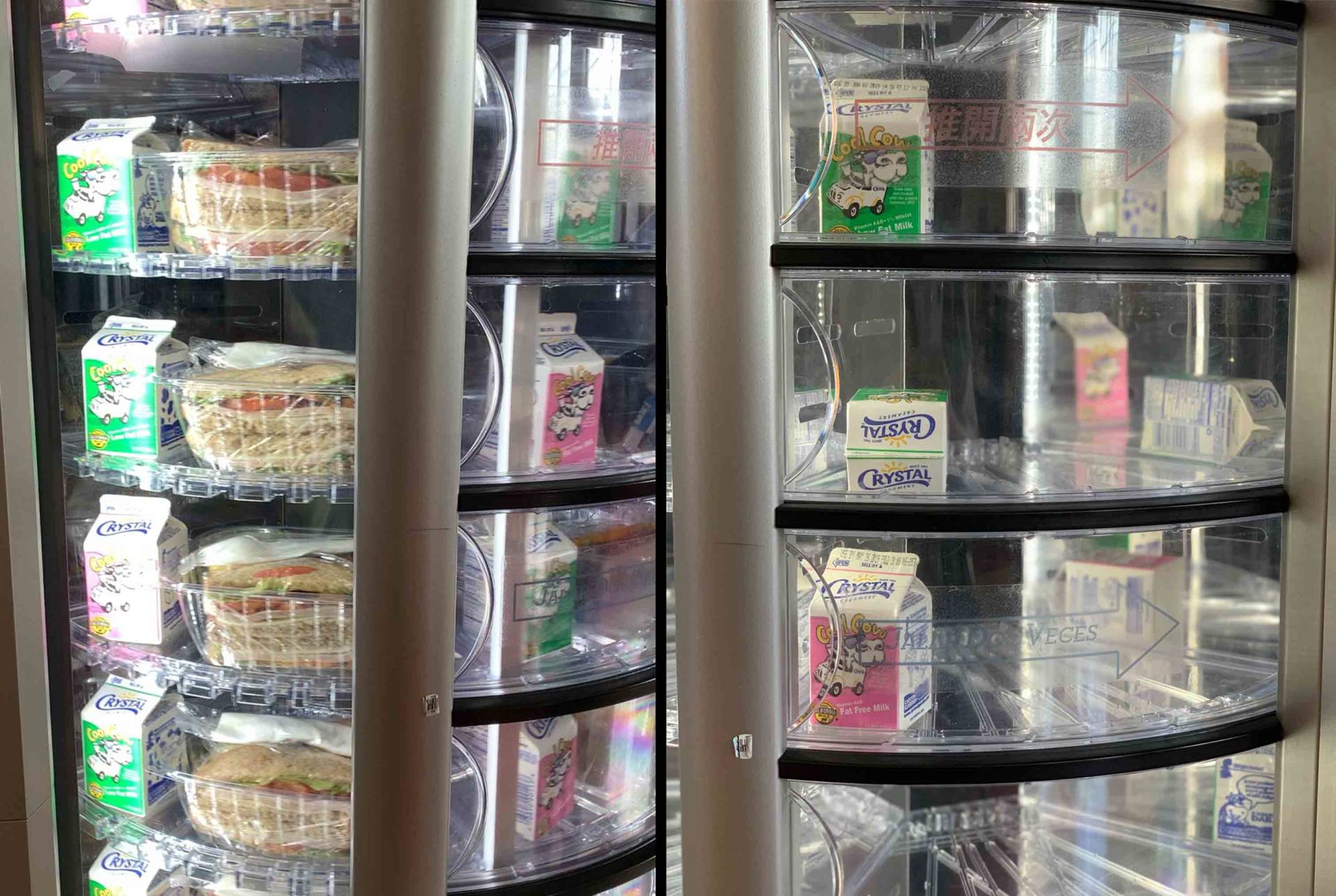
Students waited in the cafeteria line, but they could also punch a code into the cafeteria vending machine, which serves full meals that are different from what kids can get in the main line. Kids can also get food from an outdoor kiosk that looks like something you’d see at a farmers market or a festival.
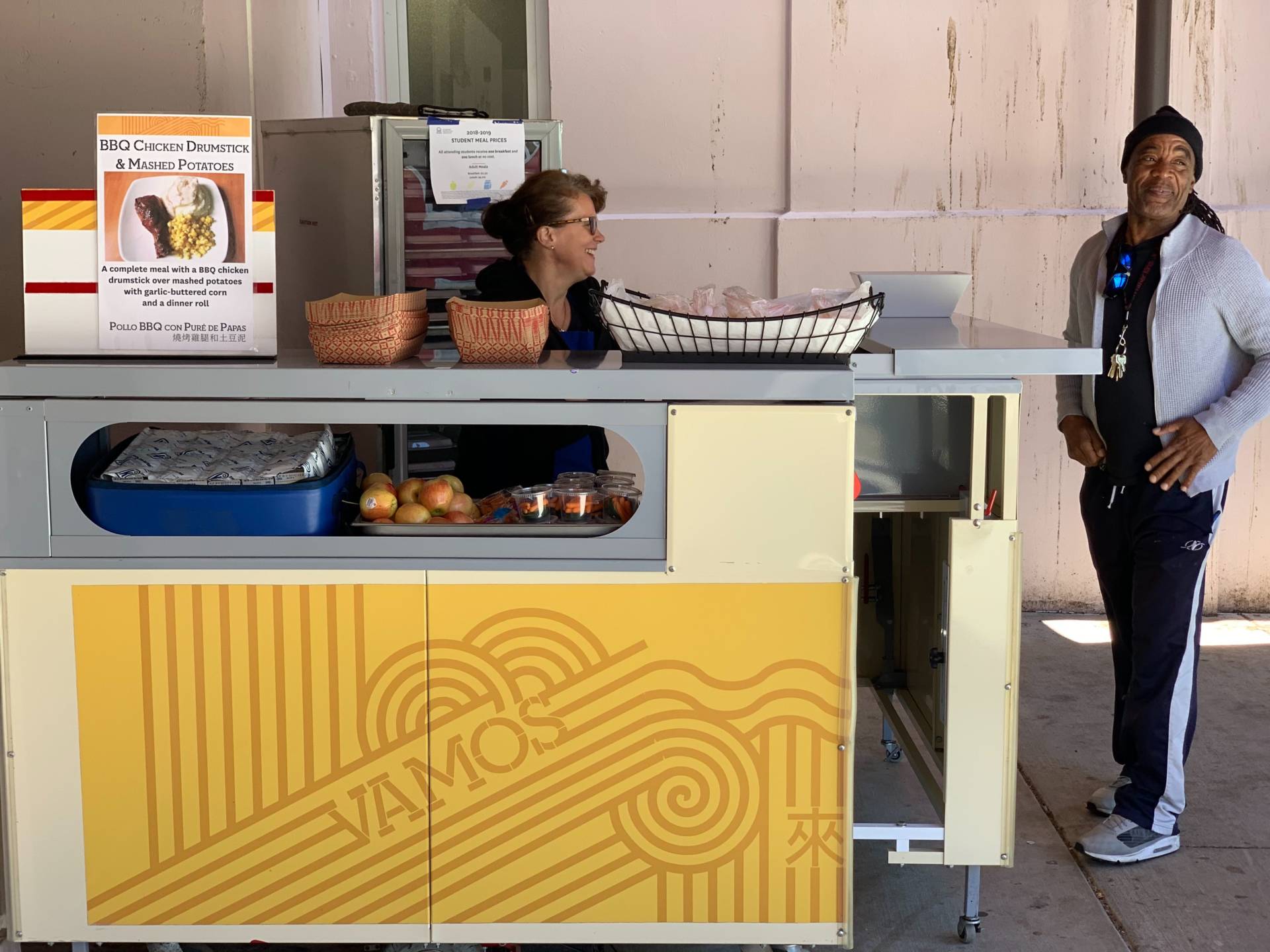
Students also engaged in all kinds of activities during lunch. School staff, including security guards, facilitated outdoor sports and games for students. They’re mindful that some students need to be invited to play, especially if they have difficulty being social.
“These are targeted activities to get kids involved in ways that are constructive, but also build relationships,” said Principal Michael Essien. “Instead of adults just being individuals that monitor kids and tell kids what not to do, what are some things we can engage with the kids and facilitate?”
Finding ways to improve the lunch experience for kids came directly from the IDEO/SFUSD redesign. Essien said 40 minutes can be a long time for lunch and recess, especially if kids have nothing to do, or if they’re at risk for bullying. Some school administrators restrict the amount of time kids have for lunch to reduce opportunities for bullying, but at MLK, Essien said activities across campus have worked well.
In addition to outdoor sports, those who want a quieter indoor experience can bring their lunch into the library to play games or do maker activities.

“It’s a lot easier to invite someone over to play Connect Four than it is to say, ‘Hey, I want to be your friend. Can I talk to you?’ ” said MLK teacher-librarian Emily McManus.
Unlike the libraries of my childhood, at MLK the space is bustling with activity. And it’s definitely not silent. There are quiet areas, but they are just one of several ways kids can recharge before getting back to class.
“It’s not just supposed to be a quiet tomb of books,” said McManus. “It’s supposed to be a living, breathing space that meets the needs of the students in all kinds of ways. And so students definitely bring their lunch in here.”
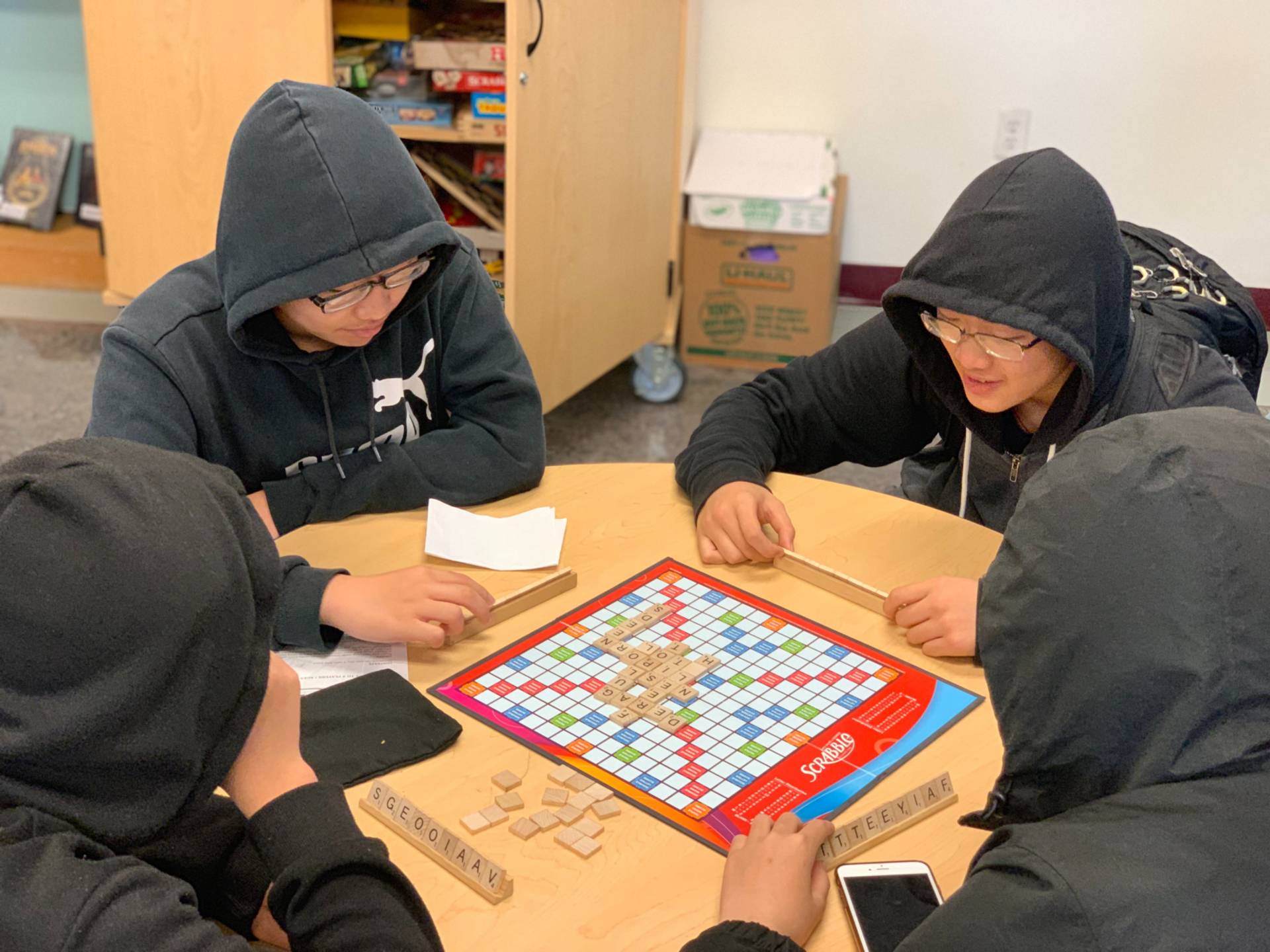
Essien has seen school lunch participation increase since the redesign. More than 50 percent of students at MLK are eligible for free or reduced-price lunch, so all students can get a free lunch. But that doesn’t guarantee that kids will eat the food.
For example, the school also has a Breakfast in the Classroom program that gives all students free breakfast. For several years, breakfast was offered in the cafeteria before the start of school, but only about 20 students ate breakfast each day. Essien attributes the low participation to a variety of issues, like not having enough time before school started to eat, and the stigma of going to a separate space to receive free food.
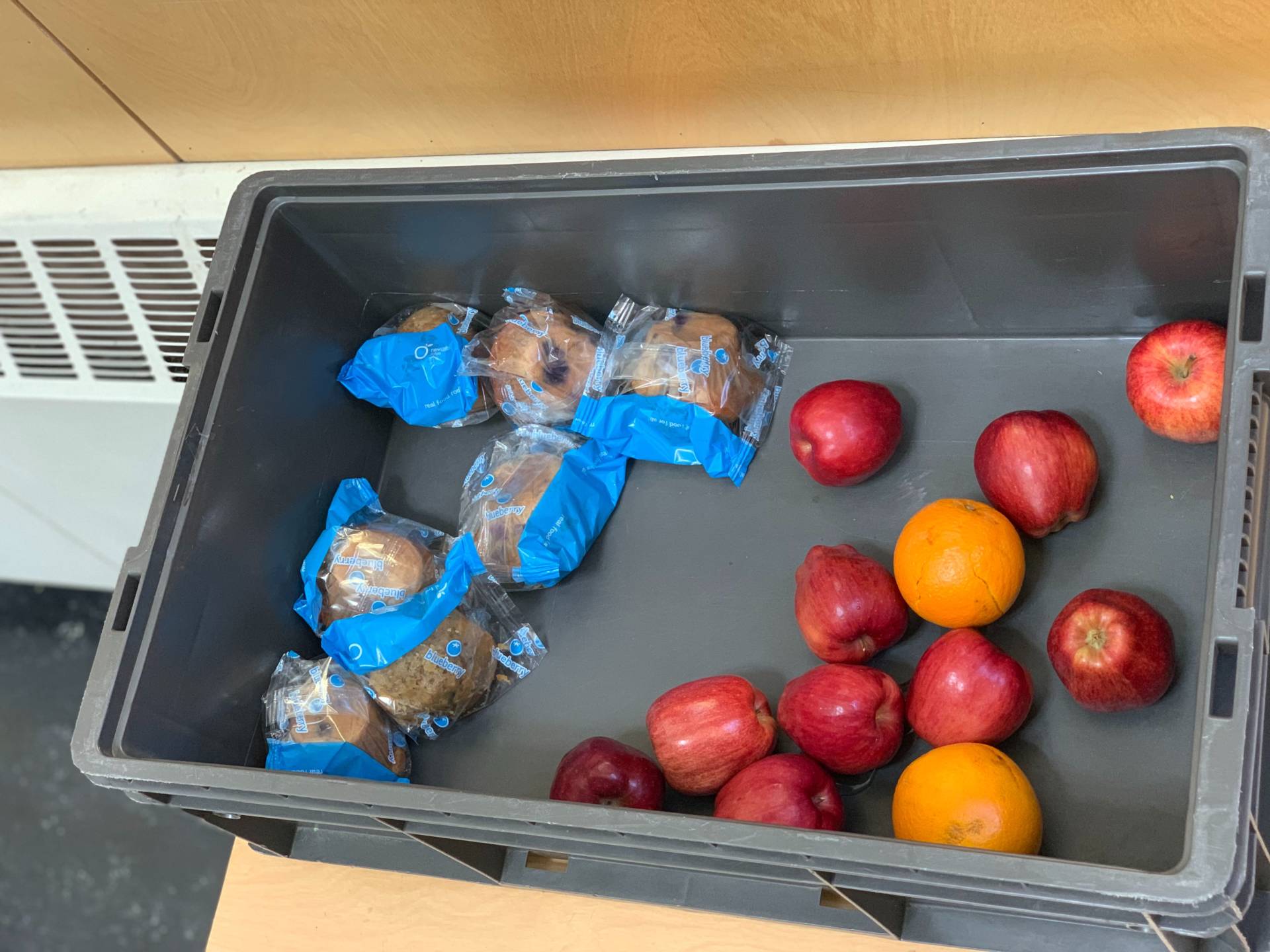
In order to increase participation, the school started sending the food directly into the classroom and the number of students eating breakfast each day increased to 175. Every morning, each class gets an insulated box filled with enough breakfast food for anyone who wants to eat. The leftovers are then spread throughout the campus for kids who need a snack throughout the day.
And when the kids had access to a more nutritious breakfast, Essien saw better behavior on campus. He said having nutritious food affected kids’ behavior and their ability to redirect negative behavior. He also said the food helped kids’ academics and studies have shown a correlation between nutritious food and test scores.
“We saw a change in all of that when we addressed the food issue,” said Essien.
By listening to student needs around food, and taking the bold step to change how schools have always done things, these schools and their districts are meeting student needs, while in the process, developing relationships and improving classroom behavior.
Listen and subscribe to our podcast from your mobile device:
via Apple Podcasts | via Stitcher | via NPROne | via Spotify
